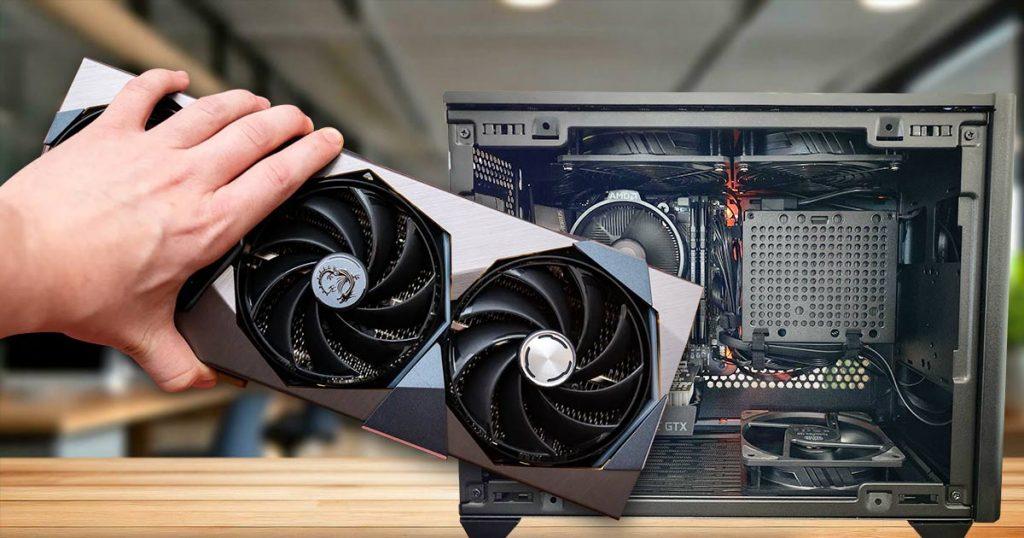Are you noticing problems with your computer’s graphics, like glitches or crashes during games or other graphic-heavy tasks? Before worrying about expensive repairs, try reseating your GPU—it’s a straightforward process that can fix many issues.
The Worth of Reseating the GPU
Reseating your GPU is like giving it a checkup to make sure it’s working well. It can fix problems like screen glitches or system crashes. Over time, the connection between the GPU and the motherboard can loosen, producing problems. By reseating the graphics card, you’re making sure it’s connected properly, which can improve your computer’s stability, fix display problems, make it run smoother, prevent overheating, and help diagnose other issues.
Why reseat your GPU?
Reseating your GPU means taking it out and putting it back in its slot on the motherboard. Here’s why you might want to do it:
- Fixing Graphics Problems: If your screen has strange things on it, like glitches or wrong colors, reseating the GPU might fix it. It helps the GPU connect better with the motherboard.
- Making Your Computer Faster: Sometimes, a loose GPU can make your computer slow. Reseating it can make it work better.
- Finding Problems: If your computer has a problem, reseating the GPU can help see if the GPU is causing it. If it still has problems after reseating, there might be another issue.
- Protecting Your Computer: A loose GPU can damage other parts of your computer. Reseating it can help prevent that.
- Keeping Your Computer Healthy: Doing this regularly can help keep your GPU working well and your computer running smoothly.
How to reseat the graphics card?
Reseating your graphics card is a simple process. Here’s a step-by-step guide:
Step 1: Gather Your Tools
You’ll need a screwdriver (if your GPU is screwed in), an antistatic wrist strap (optional but helpful), and a can of compressed air for cleaning.
Step 2: Prepare Your Workspace
Find a tidy, well-lit place to work. To avoid damaging your computer’s components, make sure you’re on a static-free surface or use an antistatic mat.
Step 3: Power Down and Disconnect
Turn off your computer completely and unplug all cables and peripherals, including the power cord. This eliminates the risk of electric shock or harm.
Step 4: Open Your Computer Case
To open the side panel of your computer case, either remove the screws or utilize the latch. Locate the GPU, which is normally found in one of the motherboard’s PCIe slots.
Step 5: Remove the GPU
If your GPU is screwed in, use the screwdriver to remove the screws. To remove the GPU from its PCIe slot, carefully raise it straight up. Do not touch the gold contacts or sensitive components.
Step 6: Clean and Inspect
Check the PCIe slot and the GPU for dust, debris, or damage. To remove dust, gently blow it away with compressed air. If necessary, clean the graphics processor.
Step 7: Reseat the GPU
Align the GPU with the PCIe slot, making sure it’s oriented correctly. Slowly insert the GPU into the slot, providing mild pressure until it clicks in place.
Step 8: Secure the GPU (if applicable)
If your GPU has screws, tighten them to secure the card in place. Be cautious not to overtighten, as this can harm the GPU or motherboard.
Step 9: Close the Computer Case
Replace the side panel on your computer case and secure it with screws or a latch.
Step 10: Reconnect and Power On
Reconnect all cords and peripherals, including the power cable. Double-check that everything is connected properly before turning on your computer.
Step 11: Test Your System
Start up your PC and check its performance. Test graphics-intensive applications or games to see if the issues are resolved.
Experiencing glitches or crashes? Try to reseat your GPU!
Reseating your GPU is a simple and effective way to fix many graphics-related issues. By following these steps, you can safely remove, clean, and reseat your GPU, ensuring a secure connection and optimal computer performance.
If reseating the GPU doesn’t solve your problems, there may be other issues that need professional help. However, for many common issues, reseating the GPU is often the first and easiest solution to try.
Next time you have graphics issues with your computer, follow this guide on how to reseat your GPU and get back to enjoying the smooth performance.
